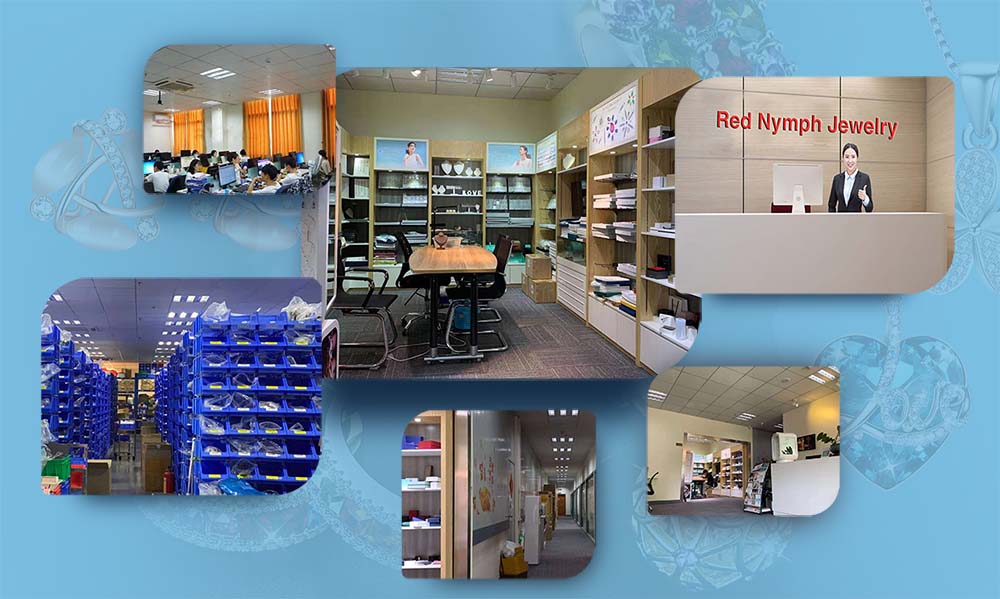
Red Nymph Jewelry
What makes sterling silver a good material for jewelry? There are some features that make it such an attractive material for jewelers and designers.
Durable and lightweight
The added metal in sterling silver makes it an incredibly durable material – it’s even harder than gold. In addition to its light weight, this quality makes it an ideal choice for jewelry that will be worn everyday or often. The following is a brief description of the durability of sterling silver and the four most common jewels – necklaces, earrings, bracelets and rings.
Necklaces: In the necklaces, sterling silver provides a sturdy material that won’t be easily scratched or dented. The sterling silver necklace is very light and can be worn all day long and is also very durable and will not wear out.
Earrings: Nothing is more frustrating than the new earrings. Sterling silver earrings are elegant, durable and not easily bent.
Bracelets: Whether you like stacked bracelets, bracelets or complex cuffs, a tasteful bracelet adds charm to your wardrobe – but if your bracelet is bent or sunken, the attraction will quickly disappear. Fortunately, the durability of sterling silver creates a strong bracelet that resists bending and scratching, so you can wear them all day without worry.
Rings: When we wear a ring, we need them to keep it everyday. The sterling silver ring is sturdy and lightweight, and will not be deformed even if worn all day.
If done properly, sterling silver jewelry can be used for a lifetime, bringing decades of beauty to your collection.
Customizable
Sterling silver is an affordable, practical metal, which means it gives jewelers and designers greater artistic freedom. They can try new styles and keep up with the latest trends – whether you are looking for a compelling piece of jewelry or a sophisticated jewelry, you will definitely find some sterling silver jewelry that suits your style.
Sweet pendants, rotating rings, unique charm necklaces and exquisite cuffs are just a few of the thousands of sterling silver options. Because sterling silver is easy to obtain and use, many jewelers will design custom jewelry according to your specific requirements. Sterling silver allows you to create the jewels you’ve always dreamed of without exceeding your budget.
Very easy to care
A piece of sterling silver jewelry does not mean it will fade. Sterling silver can be easily applied or plated with an anti-tarnish agent, giving it an additional advantage in terms of wear resistance.
Sterling silver is easy to polish or coat with enamel, which makes it resistant to corrosion and gives it a cute, high-gloss finish. While rhodium-finished products require extra work to resize or rework, adding a jacket is worth it if you don’t want to worry about tarnishing. Some jewelers will plate sterling silver on sterling silver. This extra layer of silver can help jewelry prevent rust and increase the brightness of jewelry.
Silver is shiny, bright and casts that signature metallic glint we all know and love. It’s timeless and trendy, and universally used in jewelry making. It’s a tensile metal combining both beauty and durability. Designers—and buyers—can’t get enough of silver.
Silver will likely never go out of style as it’s been cherished for centuries, with origins of discovery in Greece and Turkey (formerly Anatolia) dating back to 3000 BC. Pure silver is precious but too soft to use in jewelry. Add a little alloy to the mix and voila, you’ve got sterling silver! In addition to sterling silver, there’s also silver plate, fine silver, pure silver, nickel silver, and 925 silver.
We’ve learned that there’s no difference between sterling silver and 925 silver, but the same can’t be said for other items in the jewelry marketplace. Truth is, the term “silver” alone is quite complex. In fact, this word is popularly used as a label, when in fact silver should always be clearly identified with a hallmark representing its standard grade and quality.
With that information in mind, always look for the hallmark as jewelers and artisans are legally obligated to stamp their pieces for potential buyers.
If you don’t see a stamp, shop elsewhere. It’s not worth buying a low-quality metal disguised with a coating of sterling silver, which ultimately wears off, looks cheap and can lead to skin irritation.
That’s right, cheap metals can irritate the skin and result in allergic reactions, making sterling silver a great option for sensitive skin. Inexpensive metals like nickel or brass can cause infections, especially with earrings.
Bottom line: Sterling silver, aka 925 silver is hypoallergenic, high quality, stylish and safe.
The reason sterling silver requires the mixture of other metals is because naturally, pure silver is soft. Adding other metals to the silver increases the hardness, making it more suitable and durable for use in jewelry and housewares like silverware.
The result of this process also produces that signature silver color: bright, shiny and metallic. The only downfall of this beautiful metal is that it can tarnish, which is why it’s important to regularly clean and maintain sterling silver jewelry with polishers.
The purity of silver lands on a numeric scale, or rating system, based on 1,000. Pure silver gets a 999 rating. In order for a silver to be classified as sterling silver, it must meet at least a 92.5 purity, AKA 925. So, as you can see: 925 silver is sterling silver.
Conversely, metals that contain less than 92.5 percent silver are not sterling silver, which is important to keep in mind when buying sterling silver.